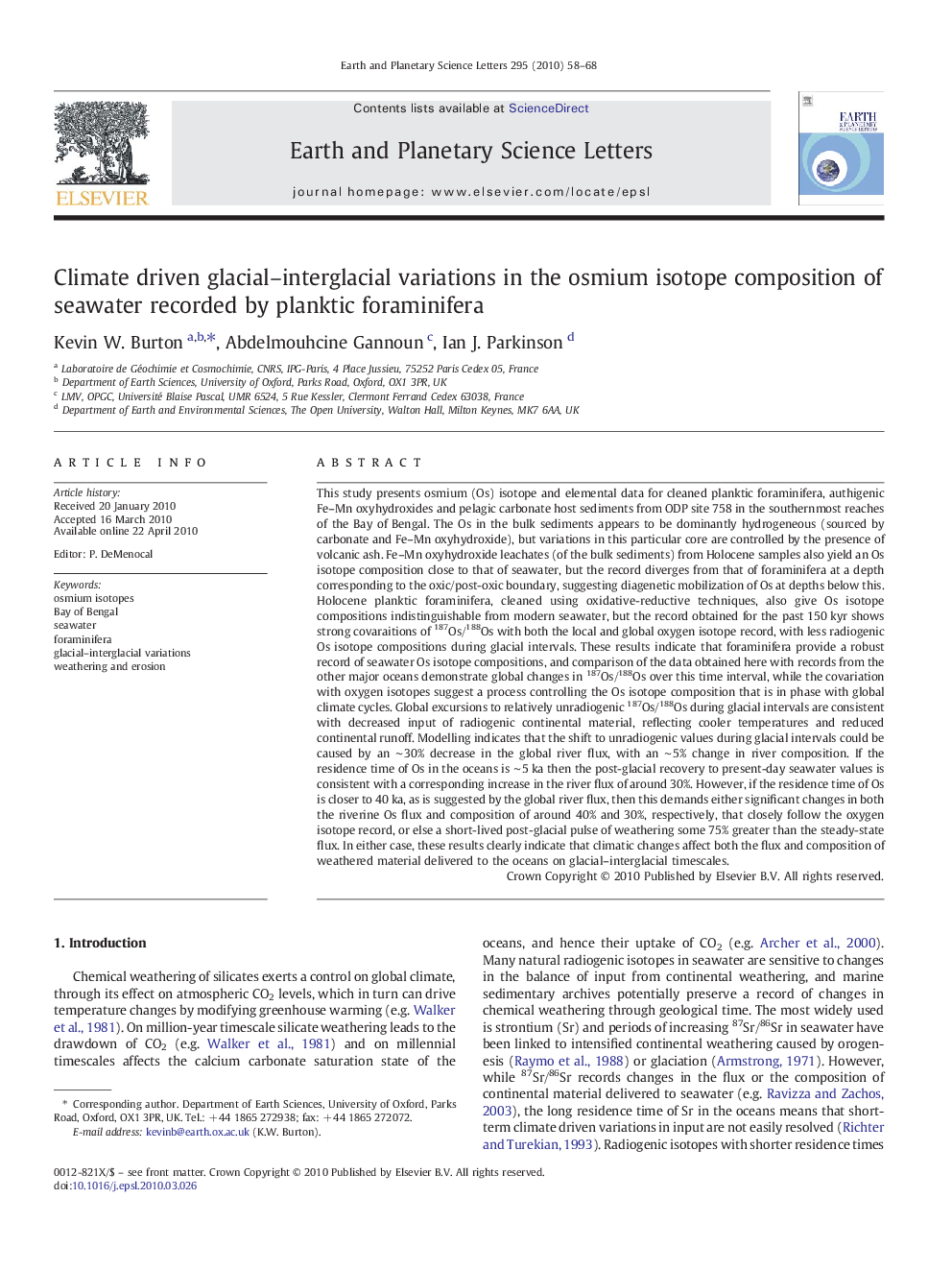| کد مقاله | کد نشریه | سال انتشار | مقاله انگلیسی | نسخه تمام متن |
|---|---|---|---|---|
| 6430917 | 1634850 | 2010 | 11 صفحه PDF | دانلود رایگان |

This study presents osmium (Os) isotope and elemental data for cleaned planktic foraminifera, authigenic Fe–Mn oxyhydroxides and pelagic carbonate host sediments from ODP site 758 in the southernmost reaches of the Bay of Bengal. The Os in the bulk sediments appears to be dominantly hydrogeneous (sourced by carbonate and Fe–Mn oxyhydroxide), but variations in this particular core are controlled by the presence of volcanic ash. Fe–Mn oxyhydroxide leachates (of the bulk sediments) from Holocene samples also yield an Os isotope composition close to that of seawater, but the record diverges from that of foraminifera at a depth corresponding to the oxic/post-oxic boundary, suggesting diagenetic mobilization of Os at depths below this. Holocene planktic foraminifera, cleaned using oxidative-reductive techniques, also give Os isotope compositions indistinguishable from modern seawater, but the record obtained for the past 150 kyr shows strong covaraitions of 187Os/188Os with both the local and global oxygen isotope record, with less radiogenic Os isotope compositions during glacial intervals. These results indicate that foraminifera provide a robust record of seawater Os isotope compositions, and comparison of the data obtained here with records from the other major oceans demonstrate global changes in 187Os/188Os over this time interval, while the covariation with oxygen isotopes suggest a process controlling the Os isotope composition that is in phase with global climate cycles. Global excursions to relatively unradiogenic 187Os/188Os during glacial intervals are consistent with decreased input of radiogenic continental material, reflecting cooler temperatures and reduced continental runoff. Modelling indicates that the shift to unradiogenic values during glacial intervals could be caused by an ∼ 30% decrease in the global river flux, with an ∼ 5% change in river composition. If the residence time of Os in the oceans is ∼ 5 ka then the post-glacial recovery to present-day seawater values is consistent with a corresponding increase in the river flux of around 30%. However, if the residence time of Os is closer to 40 ka, as is suggested by the global river flux, then this demands either significant changes in both the riverine Os flux and composition of around 40% and 30%, respectively, that closely follow the oxygen isotope record, or else a short-lived post-glacial pulse of weathering some 75% greater than the steady-state flux. In either case, these results clearly indicate that climatic changes affect both the flux and composition of weathered material delivered to the oceans on glacial–interglacial timescales.
Journal: Earth and Planetary Science Letters - Volume 295, Issues 1–2, 15 June 2010, Pages 58–68